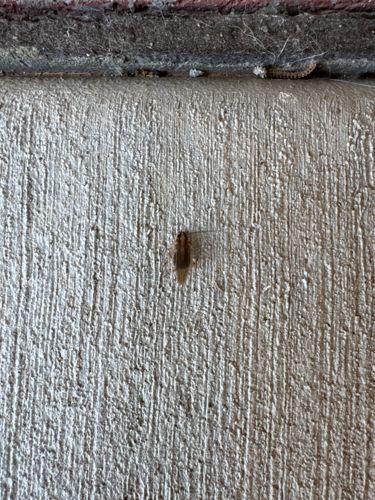Case-bearing Clothes Moth
Scientific Name: Tinea pellionella
Order & Family: Order: Lepidoptera, Family: Tineidae
Size: Adults typically have a wingspan of 9-16 mm (0.35-0.63 inches). The larvae within their cases can be up to 10-15 mm (0.4-0.6 inches) long.

Natural Habitat
Indoors, in closets, attics, storage areas, and undisturbed rooms where susceptible materials like woolens, furs, and stored textiles are present. They prefer dark, humid environments.
Diet & Feeding
The larvae feed on materials of animal origin, particularly wool, fur, feathers, and silk. They can also feed on lint, dust, and synthetic fibers if they contain a mixture of animal fibers or food residues.
Behavior Patterns
Case-bearing clothes moths are typically found in dark, undisturbed areas. The larvae construct a silk case that they carry with them, incorporating fibers from their food source. They are resilient and can survive in a wide range of conditions. Adults are poor flyers and are more likely to be seen crawling or hopping.
Risks & Benefits
Risks: Considered a significant household and museum pest due to their destructive feeding habits on natural fibers. They can cause considerable damage to clothing, carpets, upholstered furniture, and museum specimens. Benefits: None known for humans; they play a minor role in decomposition of organic matter in natural settings.
Identified on: 8/10/2025